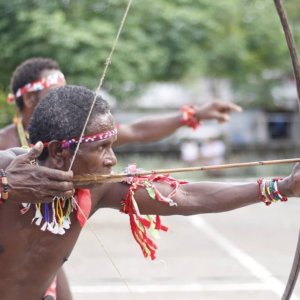 6
6




 24. 06. 2019
24. 06. 2019

… And human bones stronger, anthropologists found.
We humans like to think that our civilization is progressive, but the ancient findings do not necessarily agree with it. Despite all our modern technology, longer lifespans and larger brains, there seem to be some drawbacks compared to old hunter and gatherer communities. Hunter-gatherer lifestyle exchanges for a sedentary lifestyle of farmers, about eleven thousand years ago, had at least two disadvantages: we can do less and have much less free time.
The transition to agriculture came during the Neolithic Revolution, which spread from the Middle East to Europe. At that time, the nomads began to stay more in one place and work in the fields that provided food.
Studies from 2014 show: "When humans cease to be hunters and gatherers, their bones become brittle." Biological anthropologists studied the bones of native humans and primates and compared them to the bones of modern humans. Our bones are much thinner and much lighter. Scientists thought that our bones evolved in this way when an upright man (Homo erectus) left Africa. That was about two million years ago. They thought that lighter bones could make it easier for the people of that time to find a new adventure. With a lower weight, they could afford to travel longer distances.
Ancient records, however, to the surprise of biological anthropologist Habiba Cherchir of the Smithsonian's National Museum of Natural History, showed a completely different reality. From National Public Radio:
"Lightened bones did not start to appear until about 12 years ago. It was at this time that people's physical activity began to decline as they abandoned their nomadic hunting and collecting lives and turned to agriculture. "
When researchers looked at history about 1000 years ago, they found that the bones of people living in agricultural settlements were not as strong or dense as the bones of people from earlier times. Relatively settled farming communities did not have as much physical activity and movement, so their bones developed differently.
New studies from Cambridge University show that the agricultural way of life has not only led to more fragile bones, but has also brought about a more strenuous way of life. Anthropologists from Cambridge lived with people from the Philippine tribe of Agta, nomadic modern indigenous hunters - gatherers whose culture is disappearing with the advent of modern corporations and economic change. This ancient culture is forced to switch to an agricultural way of life.
Although the life of the Agta tribe faces extreme challenges, Cambridge scientists have found that individuals who still live as hunters and gatherers work ten hours less a week than those who have switched to agriculture. Hunters from the Agta tribe only need to work 20 hours a week to survive, but those who have already switched to agriculture must work a full 30 hours. The loss of leisure time mostly affected women in the tribe, according to the abstract of the study. They used to have half as much free time.
"We have found that individuals who are more engaged in activities other than foraging spend more time working away from home and have significantly less free time. This difference is largely due to changes in the timing of women who spend much more time farming in various fields outside their camp. "

The new study suggests that hunter-gatherers will lose hours of leisure when they become farmers. So can agriculture be seen as progress?
Dr. Mark Dyble, a researcher who lived with the Agta tribe, noted that this finding contradicted the idea that the transition to agriculture would be an escape from a more demanding lifestyle.
"For a long time, the transition from food-hunting to agriculture has been seen as an advancement that has allowed people to escape a difficult and insecure way of life," said Dr. Dyble. "But as soon as anthropologists started working with hunters-gatherers and found that food hunters actually enjoy quite a bit of free time, they started to question this hypothesis. The data we have obtained is clear evidence of that. ”
Why did the first farmers ever come up if it meant so much more work? Some experts believe that over time it has become necessary to support more and more communities. Once people started farming and became more sedentary, it was difficult or impossible for a larger community to return to their previous way of life. Meanwhile, hunters-gatherers had more time to share basic skills, customs, and culture with their friends and family.

Salulog tribe Dibulo in Dinapigue, Isabella bows to the finish in the Dinapigue Best Archer competition. Traditionally, Agta tribes from Dinapigue use their bow and arrow for hunting purposes.
One might think that the life of hunter-gatherers is just fun. But the Agta way of life is now seriously threatened by a number of health problems, such as tuberculosis, leprosy, pneumonia and alcoholism. As a nomadic nation, they have no claim to the land they need to hunt, and it is rapidly disappearing. Their language and culture are disappearing, even as they seek the support of the public and the government. See more information about Agta or Aeta.
Shamanic techniques and rituals, whose roots go back to the Stone Age, can open up the paths to the spiritual dimensions of modern humans as well. The author deals with the most practical questions: When and for what reason was the ritual performed? What ritual objects and what tools and fumigants were used? What was the choice of the right place and moment of the ritual? Shamanic rituals are the way for today's man, the way he opens his soul and leads him to the threshold of "the dimension of the filled time".